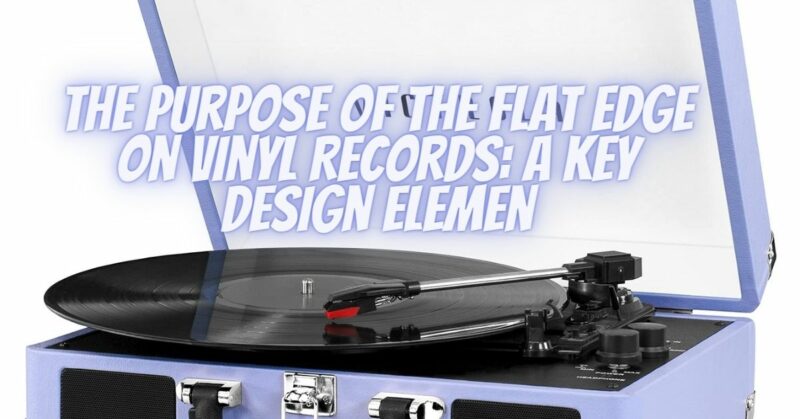Vinyl records have been a beloved music format for decades, known for their analog warmth and nostalgic appeal. One distinctive feature of vinyl records is the flat edge, often referred to as the “dead wax” or “spacer.” In this article, we will explore the purpose and significance of the flat edge on vinyl records and how it contributes to the overall functionality and experience of playing vinyl.
1. Structural Integrity:
The flat edge on vinyl records serves a crucial structural purpose. It provides stability and reinforcement to the outer edge of the record. This reinforcement helps prevent the record from warping or becoming damaged during handling, storage, or playback. The flat edge acts as a protective barrier, reducing the risk of chipping or cracking.
2. Secure Placement on Turntables:
The flat edge plays a pivotal role in the proper placement and orientation of the vinyl record on a turntable. When you position the record on the turntable, the flat edge aligns with the record’s lead-in groove, ensuring that the stylus (needle) makes contact at the correct starting point. This alignment is essential for the accurate playback of the music, preventing skips and ensuring that the stylus engages with the first track of the record.
3. Visual Cue for Playback:
The flat edge also serves as a visual cue for record players and collectors. It indicates the correct side of the record to play. Typically, the label or album art is centered on the record, and the flat edge helps identify the side with the grooves for playback. This simple yet effective design element enhances the user experience and minimizes the risk of playing the wrong side unintentionally.
4. Aesthetic Considerations:
Beyond its functional purposes, the flat edge contributes to the aesthetic appeal of vinyl records. It adds a visual contrast to the smooth, continuous surface of the record, making it easier to identify the edge and handle the record with care. Vinyl records are celebrated for their tactile qualities, and the flat edge is part of what makes handling records a unique and enjoyable experience.
5. Manufacturing Convenience:
From a manufacturing perspective, the flat edge simplifies the pressing process of vinyl records. It provides a clear point of reference for mold separation and trimming excess material during production. This aids in achieving consistent and precise dimensions for records, ensuring that they meet industry standards and can be played on a wide range of turntables.
Conclusion:
The flat edge on vinyl records is more than just a design element; it serves essential functional, structural, and visual purposes. It enhances the stability, placement, and visual identification of records, ensuring that they can be enjoyed with ease and precision. While the flat edge may seem like a minor detail, it plays a significant role in the overall experience of playing and appreciating vinyl records, contributing to their enduring appeal among music enthusiasts and collectors.


